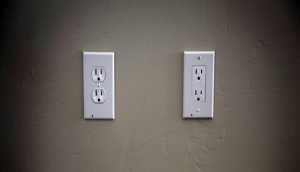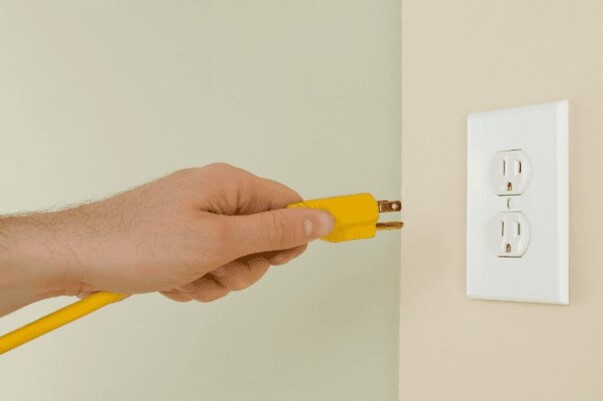As a homeowner, ensuring the electrical safety of your living space is crucial to protect yourself, your family, and your property. Verifying the voltage of your standard outlets is a vital aspect of electrical safety, as incorrect voltage can have devastating consequences. Electrical shocks, fires, and damaged appliances are just a few potential risks associated with incorrect voltage.
Taking the time to test your outlets is a simple yet effective way to safeguard against these hazards and ensure a secure and efficient electrical system.
Why is Testing Outlet Voltage Important?
Your home’s electrical outlets should provide a consistent level of power to run appliances, lights, and other electronics. However, fluctuating voltage levels or incorrect voltage can lead to damaged appliances, flickering lights, or even electrical fires. Regularly testing your outlets helps prevent these issues and keeps your home safe.
For more information, check out this guide on standard outlet voltage from cheselectric.com, which can help diagnose and fix any electrical problems you encounter while testing your outlets. By taking the necessary precautions, you can confidently verify your outlet voltage.
What Tools Do You Need?
To safely test the voltage of your standard outlets, you’ll need a few basic tools. The most common tool used for this purpose is a digital multimeter. This handy device can measure voltage, current, and resistance, making it perfect for testing electrical outlets. Here’s what you’ll need:
- Digital multimeter: The main tool for measuring voltage.
- Insulated screwdriver: Remove outlet covers if needed.
- Safety gloves: Protect your hands from potential shocks.
- Eye protection: For extra safety during the testing process.
Once you have these tools ready, you can begin testing your outlets safely.
How to Safely Test the Voltage of Your Standard Outlets?
Testing outlet voltage can help ensure electrical safety in your home, but proper precautions are essential. Here are the key steps you should follow to safely check the voltage of your outlets:
1. Turn Off the Power (Optional)
While testing voltage doesn’t typically require turning off the power, it’s important to ensure that you take all necessary safety precautions. You can switch off the breaker for the area you’ll be working on if you feel unsure or are not used to working with electricity. However, to test the voltage, the power needs to be turned on.
2. Inspect the Outlet for Damage
Before testing, inspect the outlet for visible signs of damage. Look for:
- Burn marks or discoloration.
- Loose or cracked faceplates.
- Sparks when plugging in devices.
If you notice any of these signs, avoid testing the outlet yourself and consider hiring a professional electrician for help, as this could indicate a serious electrical issue.
3. Set Your Multimeter to Voltage Mode
Next, you’ll need to set your digital multimeter to measure voltage. Turn the multimeter’s dial to the “V” setting, typically marked with a “V” and a straight line above it, which stands for DC voltage. Since we are testing household outlets that use AC voltage, make sure your multimeter is set to measure AC, not DC. Most multimeters will have a specific setting for AC voltage, marked with “V” and a wavy line (~).
4. Insert the Multimeter Probes Into the Outlet
Once your multimeter is set up, it’s time to test the outlet. Here’s how to safely do it:
- Insert the black (negative) probe into the left slot of the outlet, which is usually the neutral wire.
- Insert the red (positive) probe into the right slot, which is the “hot” wire.
Make sure the probes don’t touch each other during this process, as this could create a short circuit.
5. Read the Voltage on the Multimeter
Once both probes are inserted into the outlet, the multimeter will display the voltage reading. In a typical U.S. household, standard outlets should show a reading between 110 and 120 volts. If the reading is significantly higher or lower, this could indicate an issue with the electrical wiring in your home.
If the voltage falls within this range, your outlet is functioning properly. However, if the voltage is much lower or fluctuating, you may need to consider troubleshooting the issue or contacting a professional for help.
6. Turn Off the Multimeter and Remove the Probes
Once you’ve recorded the voltage reading, turn off your multimeter and carefully remove the probes from the outlet. If you’re testing multiple outlets, repeat the process for each one. Ensure you take note of any inconsistencies in voltage levels across your home’s outlets.

What Are The Common Outlet Problems and What Do They Mean?
Sometimes, your outlet tests might show something unexpected. Here are some common issues:
1. No Voltage
If your multimeter shows 0 volts, it could mean:
- The outlet isn’t connected to power.
- A circuit breaker might be turned off.
- There could be a broken wire somewhere.
2. Low Voltage
If the voltage is below 110 volts, it might mean:
- Too many things are plugged in and using power.
- There might be a problem with the main power coming into your house.
3. High Voltage
Voltage above 125 volts can be dangerous. It might mean:
- There’s a problem with the power company’s equipment.
- Something is wrong with your home’s electrical system.
4. Reversed Polarity
If you get a reading when the probes are in the wrong slots, it means the wires in the outlet are switched around. This is dangerous and needs to be fixed by an electrician.
When to Call a Professional?
While it’s fun to learn about electricity, some things should only be handled by experts. Call an electrician if:
- You see any voltage readings that aren’t between 110-125 volts.
- The outlet feels warm to the touch.
- You hear buzzing or see sparks from the outlet.
- The outlet is cracked or looks damaged.
- You’re not sure about anything you’ve found during your tests.
Remember, it’s always better to be safe when dealing with electricity!
Conclusion
Knowing how to safely test the voltage of your standard outlets can help you identify potential electrical issues before they become serious problems. By using a digital multimeter, following safety precautions, and understanding the correct voltage levels, you can ensure your home’s electrical system remains in good working order.
However, if you encounter any issues, such as abnormal voltage readings or damaged outlets, it’s always best to contact a professional for assistance.

